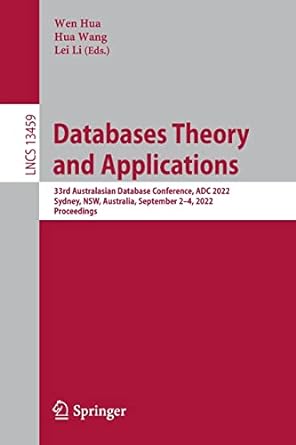Question
Start with the following Python code. alphabet = abcdefghijklmnopqrstuvwxyz test_dups = [zzz,dog,bookkeeper,subdermatoglyphic,subdermatoglyphics] test_miss = [zzz,subdermatoglyphic,the quick brown fox jumps over the lazy dog] def histogram(s):
Start with the following Python code.
alphabet = "abcdefghijklmnopqrstuvwxyz"
test_dups = ["zzz","dog","bookkeeper","subdermatoglyphic","subdermatoglyphics"]
test_miss = ["zzz","subdermatoglyphic","the quick brown fox jumps over the lazy dog"]
def histogram(s): d = dict() for c in s: if c not in d: d[c] = 1 else: d[c] += 1 return d
Copy the code above into your program but write all the other code for this assignment yourself.
Part 1
Write a function called has_duplicates that takes a string parameter and returns True if the string has any repeated characters. Otherwise, it should return False.
Implement has_duplicates by creating a histogram using the histogram function above. your implementation should use the counts in the histogram to decide if there are any duplicates.
Write a loop over the strings in the provided test_dups list. Print each string in the list and whether or not it has any duplicates based on the return value of has_duplicates for that string. For example, the output for "aaa" and "abc" would be the following.
aaa has duplicates abc has no duplicates
Print a line like one of the above for each of the strings in test_dups.
Part 2
Write a function called missing_letters that takes a string parameter and returns a new string with all the letters of the alphabet that are not in the argument string. The letters in the returned string should be in alphabetical order.
Your implementation should use a histogram from the histogram function. It should also use the global variable alphabet. It should use this global variable directly, not through an argument or a local copy. It should loop over the letters in alphabet to determine which are missing from the input parameter.
The function missing_letters should combine the list of missing letters into a string and return that string.
Write a loop over the strings in list test_miss and call missing_letters with each string. Print a line for each string listing the missing letters. For example, for the string "aaa", the output should be the following.
aaa is missing letters bcdefghijklmnopqrstuvwxyz
If the string has all the letters in alphabet, the output should say it uses all the letters. For example, the output for the string alphabet itself would be the following.
abcdefghijklmnopqrstuvwxyz uses all the letters
Print a line like one of the above for each of the strings in test_miss.
Submit your Python program. It should include the following.
The provided code for alphabet, test_dups, test_miss, and histogram.
Your implementation of the has_duplicates function.
A loop that outputs duplicate information for each string in test_dups.
Your implementation of the missing_letters function.
A loop that outputs missing letters for each string in test_miss.
Also submit the output from running your program.
Step by Step Solution
There are 3 Steps involved in it
Step: 1

Get Instant Access to Expert-Tailored Solutions
See step-by-step solutions with expert insights and AI powered tools for academic success
Step: 2

Step: 3

Ace Your Homework with AI
Get the answers you need in no time with our AI-driven, step-by-step assistance
Get Started


